Do you find yourself coming back to work after the holidays wondering “what is work?” Coming back to “real life” from the holidays can be tough. You may even need a vacation to get through that post-holiday slump. Especially if you feel overworked and underpaid. Then it’s time for a vacation—or may a job change. And with all your new year’s resolutions 2016 is the perfect year to make your next vacation an eco-friendly one.
It’s not always easy to take the time to incorporate sustainability into your vacation time. But, there are incredible experiences for vacations out there which are affordable, and sustainable. These tips can help you plan an eco-friendly adventure.
1) Backpacking
Taking a backpacking trip can be inexpensive and if you follow the “leave no trace” principles you can actually accomplish leaving only footprints. To even minimize your footprints further, you can choose trails that are “off the beaten path”—not to get too cheesy— and avoid damaging over crowded destinations. Plus, there are other options to Thailand, Machu Picchu and the Galapagos as my colleague points out in this article.
2) Pack light
Have you ever had the experience of travelling and you brought a “carry-on” but it’s too large so the airline checks the bag? Well, the less you bring the less impact you have in many ways. You’ll be able to catch public transportation easier which means less carbon footprint. Plus, for air travel, your gear weighs less which means the airplane weighs less which means less fuel and less carbon emissions used for your trip.
How does one pack lightly? If you have a tendency to overpack, try packing...then unpack and cut it in half. Or you can try the rule of three. Three shirts, pairs of socks, underwear, and pants, one dress if you’re fancy. Why three? One to wear, one to wash, one to dry. (It also helps if you pack a little laundry soap to wash some of that in any available sinks in case of emergency).
3) Pick your products wisely
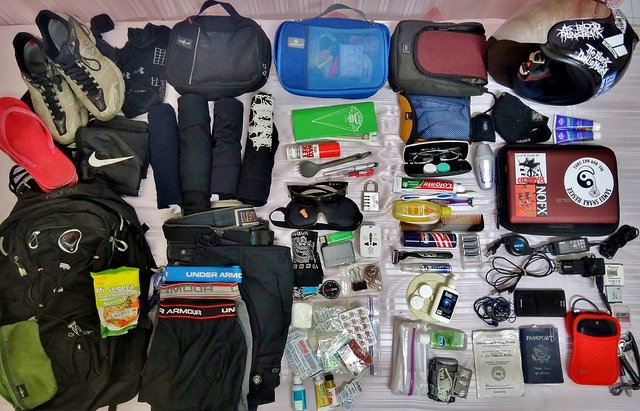
When travelling in fragile ecosystems, or regions without proper sanitation, it’s important to know that the products you use will most likely be disposed of in that region. Avoid products with microbeads, aerosol cans, and sulfate shampoos as mentioned in this Global Citizen article. Using biodegradable soap, shampoo, and other products can ensure you leave the place you visit just as pristine for locals and future visitors.
4) Map it out
Plan out your trails, activities and spend some time thinking about the impact of the adventures on your agenda. Would you really enjoy hiking a notorious but crowded trail or can you research some less travelled spots nearby? Can you bike somewhere as opposed to ATV and cut down on carbon emissions? Planning these activities ahead of time lets you know your best and most eco-friendly activity options. Spreading out the impact of tourism helps sustain tourist destinations for longer periods of time. It also shares the economic benefits across a wider range of people in that area as well.
5) Pack it out
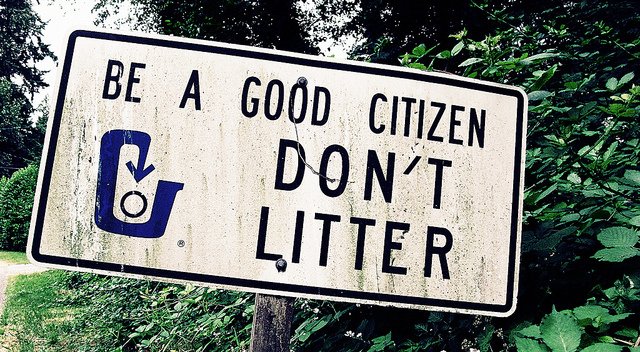
No matter where you are, pick up and dispose of your trash properly. Whether it’s not littering in a city or on a trail, packing out your trash is incredibly important to sustaining the fragile environments humans love to play, visit, and vacay in.
6) Get to know the people in your area
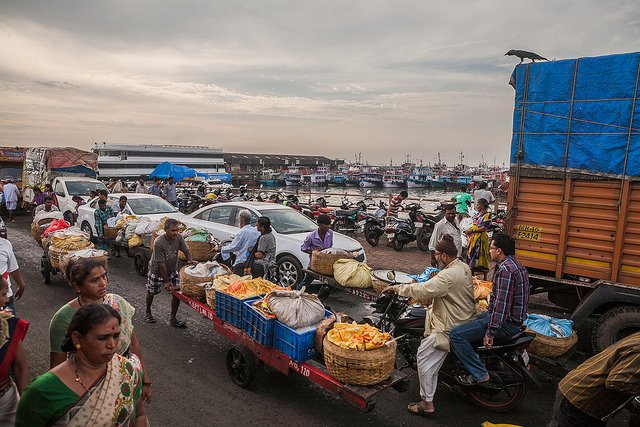
Although a vacation is a time to relax, take your mind off work and focus on yourself. You will get so much more out of the travelling experience if you get to know local residents in your area. You can learn a new spot for drinks or the politics and issues that people in a different part of the world care about. It’s true basically anywhere people love talking about their home and lives (doesn’t everyone like talking about themselves?) Take advantage of that wherever you go. This is part of sustainable travel because getting to know the people in the region you’re visiting, and understanding perspectives creates a truly global society. And truly global societies see past geographic and cultural divides to take care of each other.
7) Learn the language
Still wondering why I chose Swedish as my Rosetta Stone language, oh well
— Michaela Lambert (@nameismichaela) January 6, 2016Better yet, try to speak it! Even if you are travelling somewhere you can comfortably get by using English, attempting to speak the native language in a country will be appreciated. It may feel embarrassing or uncomfortable but doing it and asking for constructive criticism is one of the best ways to learn a new skill and get to know new cultures.
8) Reduce your water use
Depending on where you’re travelling, there are different ways to accomplish this one. Bringing a reusable water bottle and even a water filter so disposable bottled water does not have to be transported for tourist consumption can make a big difference in creating a more sustainable travel destination. You’ll see less plastic bottles on your next visit and leave knowing you helped decrease trash for your vacay pick. Also, looking into local foods can help. Often food and water for tourists is imported which has high impact on emission and water use for preparation, but if you do some research on local produce you can end up getting to know the culture better and maybe find a new favorite food.
9) Leave it
Don’t take natural artifacts, leaves, flowers, even rocks. Yes, this is definitely hippy lessons 101 but even if you find a really cool sand dollar when you take it less people have the chance to experience the same joy and excitement you felt upon discovering it. Plus, it’s part of the land you’re visiting and leaving little impact means leaving land the way you found it. It also shows that you respect the place you’re visiting. R-E-S-P-E-C-T just leave that little tree!
10) Volunteer
Are you looking for a vacation where you can get some sun, fresh air and even work on improving your health? Volunteering options abroad such as CVIP (Conservation Volunteers International Program) offer trail maintenance, wildlife habitat restoration, and native plant restoration among others. You can help protect the ecosystems you’ve always wanted to visit during your vacation. Just make sure that your project is truly benefiting the local community by doing a little research.
11) Stay in local eco-friendly lodging
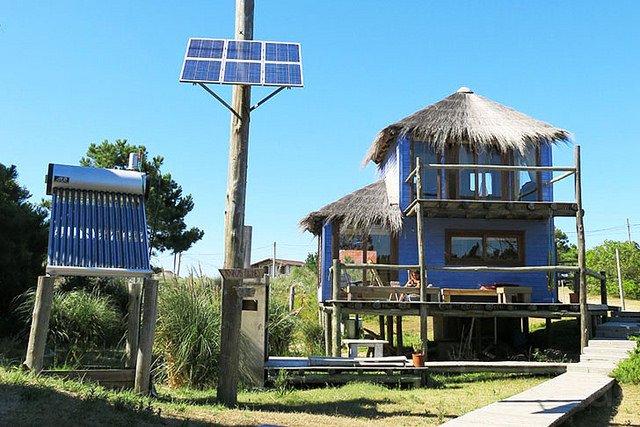
Major hotels can be pretty inefficient when it comes to sustainability. There are shortcuts around this like hanging up your towel so it’s not wasting unnecessary water and electricity. An even better option is to research alternative lodging such as certified eco-lodges or staying in a local home. These options prevent large hotels (which use large amounts of scarce resources, and often do not distribute economic benefits to locals particularly well) from being built in fragile communities that often already rely on a tourist economy. Plus, apps like Airbnb makes this easier than ever before. If you simply can’t give up a hotel check out this list of 30 eco-friendly hotels minimizing environmental impact around the world.
12) Check if you can fly with no carbon footprint
Many airlines have carbon off-set programs for flights. Airlines like Virgin Australia offer options to fly carbon neutral. How does it work? If you check the fly carbon neutral option in this case, you pay a little extra and Virgin Australia directly supports via donation toward protecting native forests in Tasmania through the Tasmanian Land Conservancy - New Leaf Carbon Project.
13) Use public transportation

Some of your most memorable moments could be from public transportation. Whether it’s witnessing a dance on the subway, or starting a conversation with another traveller or local resident it can be a unique and entertaining experience. Further, public transportation is energy efficient, saves money, and with an open-mind can be more exciting.
14) Check for clean cruises
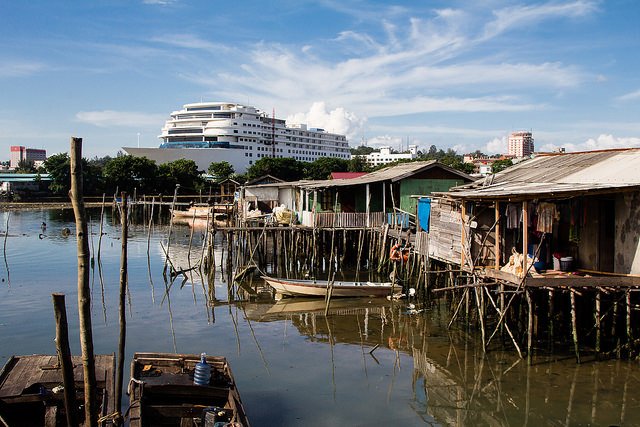
Cruises in general are one of the most unsustainable ways to travel for a vacation as mentioned by Global Citizen previously here. But, they are often affordable and convenient. So, if you’re going to do a cruise, the best tip is to look at the emissions and pollution impact. Look for cruise ship lines that let you know they use “scrubbers” to get clean emissions, and ask them about their sewage treatment and disposal policies. Unregulated cruise ships emit sulfuric acid which leads to ocean acidification. Some cruises, such as Discovery Voyage in Alaska, even offer a carbon off-set program as well.
Travelling has a big impact on the planet. In 2015, over 60 million Americans travelled abroad. And the number of tourists from developing nations is growing rapidly each year. There’s little doubt that when browsing Instagram the majority of people love to travel, especially abroad. Heck, even just looking at other people travelling and learning about new places, people and awaiting adventures is exciting. And exploring diverse cultures across the globe is part of what connects humanity, makes people grow, and want to help each other. Travelling is good thing, and it’s even better when it’s done in a socially and environmentally sustainable way.
If travelling is one of your New Year’s resolutions you can also adopt one of the Global Goals such as climate action, or protecting life below water or life on land as your resolution in TAKE ACTION NOW.